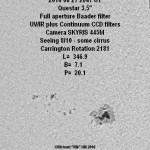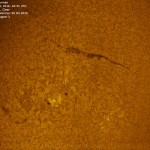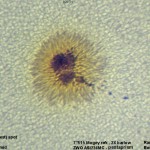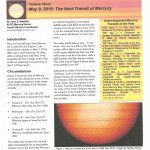October 19, 2016
A short Summary of Carrington Rotation 2181
Carrington Rotation 2181 covered the time period from 2016-08-26 2116 UT until 2016-09-23 0334 UT.
481 Reports and images were submitted and can be viewed in ALPO’s Solar Archive for CR2181:
http://www.alpo-astronomy.org/gallery/main.php?g2_itemId=88450
During the rotation, 18 Active Regions could be observed with the largest region, AR2585, reaching its max. area of 590 millionths on September 4th, . This is more than twice that of the active region area covered by the largest AR in the previous rotation, which reached a max. of 290 millionth on August 10th. The total active region area for the hemisphere maxed out two days earlier on September 2nd with 730 millionths and the Wolf number reached its maximum on September 1st with 91. As mentioned, the dominant region during the rotations was AR2585. Unlike the previous four rotation, CR2181 did not have any days with a total active region area of 0 or a Wolf number of 0.
We thank all of those who did submit their data and continued their effort to record the solar activity over the years.
For this Rotation we are featuring three images from our observers Rik Hill, Michael Borman and Randy Tatum. Thanks to them as well as all other contributors for a great rotation. Please take a look at their images in our archive.








